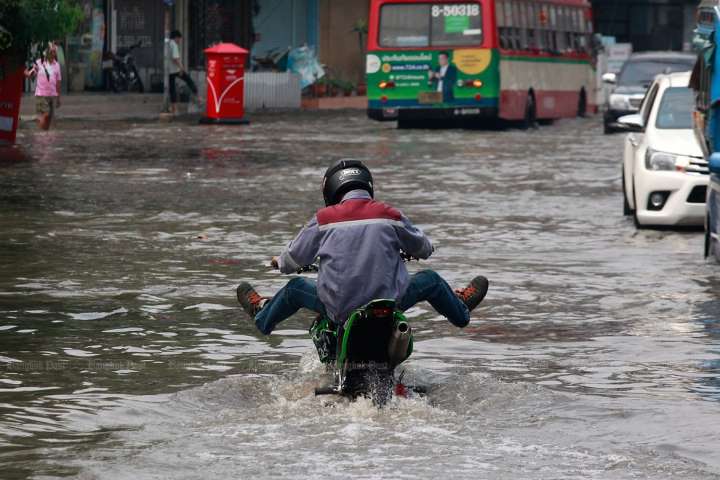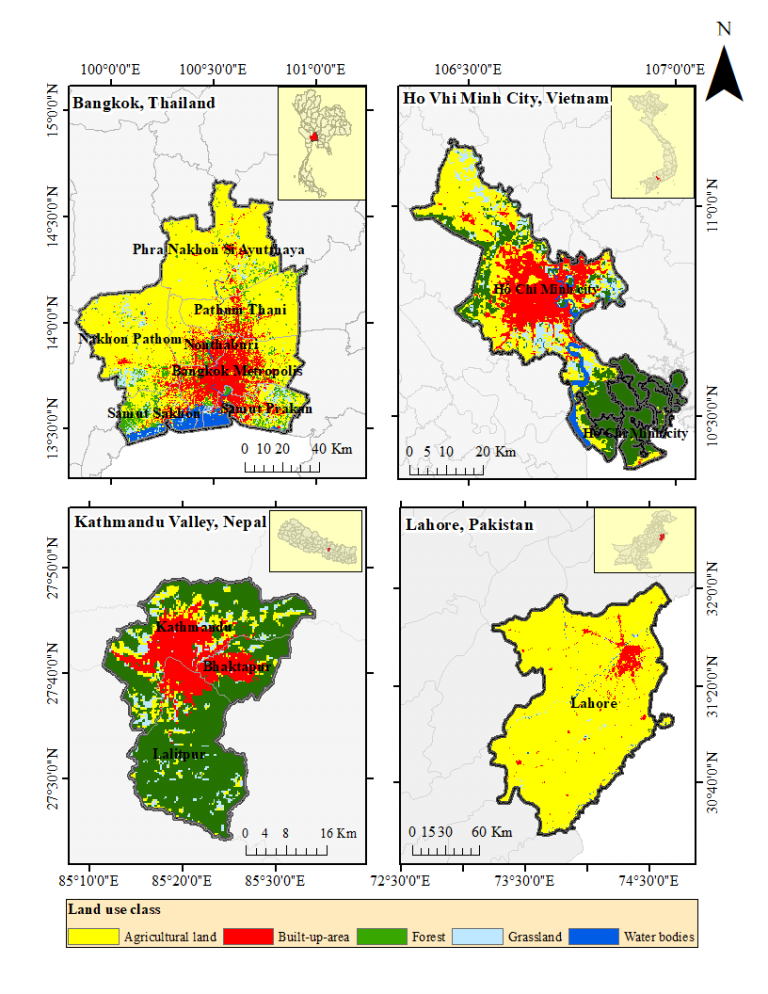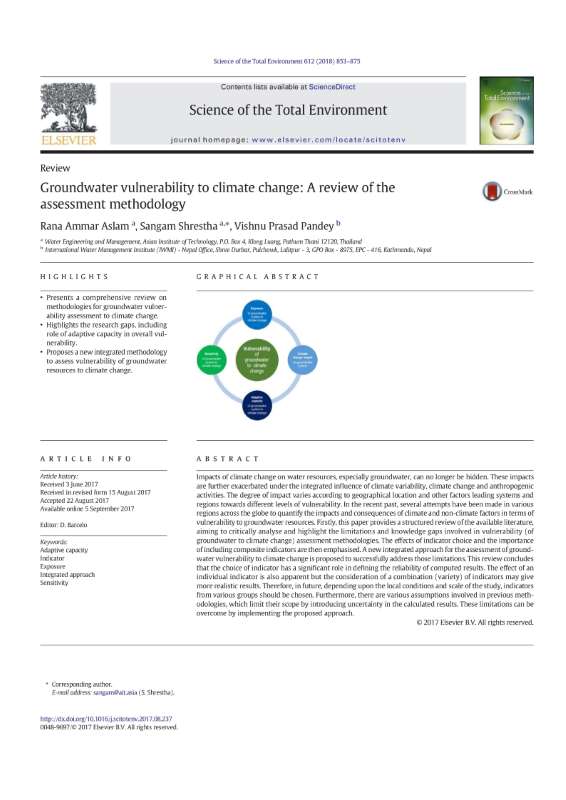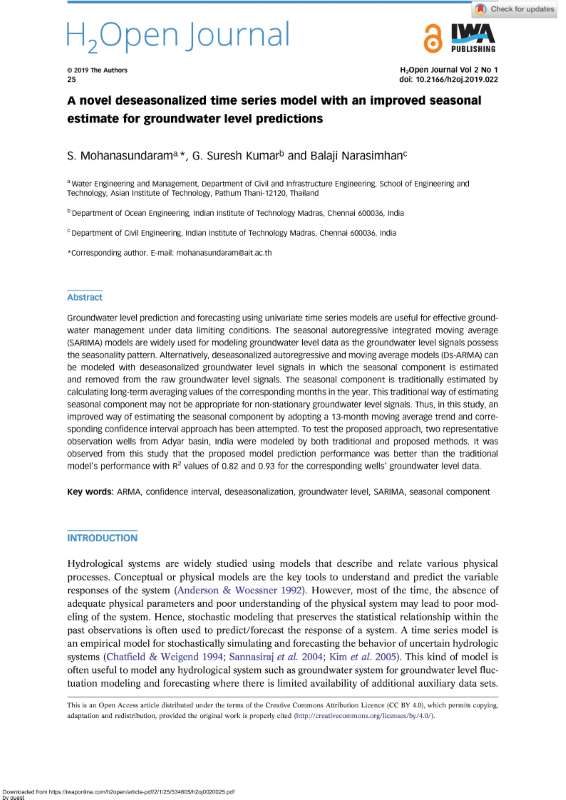
Groundwater plays an important role in the sustainable development of major cities in Asia. The strategic importance of groundwater for the city’s water supply will probably intensify under climate change and human development (population growth, urbanization) in the future. Therefore, it is imperative to assess the resiliency of groundwater under climate change and human development for strategic planning and management of water resources in urban areas. The outputs of the project will enhance the understanding of the impact of climate change and human development on groundwater system and will help to provide transparency in identifying the vulnerable or sensitive part of the system which will significantly enhance the chances of developing strategies for preparedness, response, and recovery against disruptive events.

The aim of the project is to improve understanding of the impacts of climate change and human development on groundwater resources and local demand. The project will develop policy recommendations for sustainable groundwater development and management that will support adaptation and build resilience. There are four key objectives:

Impacts of climate change on water resources, especially groundwater, can no longer be hidden. These impacts are further exacerbated under the integrated influence of climate variability, climate change and anthropogenic activities. The degree of impact varies according to geographical location and other factors leading systems and regions towards different levels of vulnerability. In the recent past, several attempts have been made in various regions across the globe to quantify the impacts and consequences of climate and non-climate factors in terms of vulnerability to groundwater resources. Firstly, this paper provides a structured review of the available literature, aiming to critically analyze and highlight the limitations and knowledge gaps involved in vulnerability (of groundwater to climate change) assessment methodologies. The effects of indicator choice and the importance of including composite indicators are then emphasized. A new integrated approach for the assessment of groundwater vulnerability to climate change is proposed to successfully address those limitations. This review concludes that the choice of indicator has a significant role in defining the reliability of computed results. The effect of an individual indicator is also apparent but the consideration of a combination (variety) of indicators may give more realistic results. Therefore, in future, depending upon the

Considerable uncertainty occurs in the parameter estimates of traditional rainfall–water level transfer function noise (TFN) models, especially with the models built using monthly time step datasets. This is due to the equal weights assigned for rainfall occurring during both water level rise and water level drop events while estimating the TFN model parameters using the least square technique. As an alternative to this approach, a threshold rainfall-based binary-weighted least square method was adopted to estimate the TFN model parameters. The efficacy of this binary-weighted approach in estimating the TFN model parameters was tested on 26 observation wells distributed across the Adyar River basin in Southern India. Model performance indices such as mean absolute error and coefficient of determination values showed that the proposed binary-weighted approach of fitting independent threshold-based TFN models for water level rise and water level drop scenarios considerably improves the model accuracy over other traditional TFN models.

Groundwater level prediction and forecasting using univariate time series models are useful for effective groundwater management under data limiting conditions. The seasonal autoregressive integrated moving average (SARIMA) models are widely used for modeling groundwater level data as the groundwater level signals possess the seasonality pattern. Alternatively, deseasonalized autoregressive and moving average models (Ds-ARMA) can be modeled with deseasonalized groundwater level signals in which the seasonal component is estimated and removed from the raw groundwater level signals. The seasonal component is traditionally estimated by calculating long-term averaging values of the corresponding months in the year. This traditional way of estimating seasonal component may not be appropriate for non-stationary groundwater level signals. Thus, in this study, an improved way of estimating the seasonal component by adopting a 13-month moving average trend and corresponding confidence interval approach has been attempted. To test the proposed approach, two representative observation wells from Adyar basin, India were modeled by both traditional and proposed methods. It was observed from this study that the proposed model prediction performance was better than the traditional model’s performance with R2 values of 0.82 and 0.93 for the corresponding wells’ groundwater level data.